Filter by

The Innovation Revolution in Agriculture = A Roadmap to Value Creation
This open access book is an important reframing of the role of innovation in agriculture. Dr. Campos and his distinguished coauthors address the need for agriculture to feed a growing global population with a reduced environmental footprint while adapting to and mitigating the effects of changing climate. The authors expand the customary discussion of innovation in terms of supply driven R&D to…
- Edition
- 1
- ISBN/ISSN
- 9783030509910
- Collation
- XIX, 234 hlm; ill., lamp.,
- Series Title
- -
- Call Number
- -
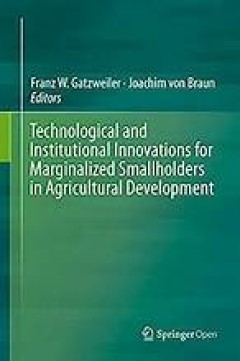
Technological and Institutional Innovations for Marginalized Smallholders in …
The aim of the book is to present contributions in theory, policy and practice to the science and policy of sustainable intensification by means of technological and institutional innovations in agriculture. The research insights re from Sub-Saharan Africa and South Asia. The purpose of this book is to be a reference for students, scholars and practitioners inthe field of science and policy for…
- Edition
- 1
- ISBN/ISSN
- 978-3-319-25718-1
- Collation
- -
- Series Title
- -
- Call Number
- XV, 435

Agricultural Implications of Fukushima Nuclear Accident (IV)
This open access book presents the findings from on-site research into radioactive cesium contamination in various agricultural systems affected by the Fukushima Daiichi Nuclear Power Plant accident in March 2011. This fourth volume in the series reports on studies undertaken at contaminated sites such as farmland and forests, focusing on soil, water, mountain, agricultural products, and animal…
- Edition
- -
- ISBN/ISSN
- 978-981-19-9360-2
- Collation
- XIII, 276
- Series Title
- -
- Call Number
- -
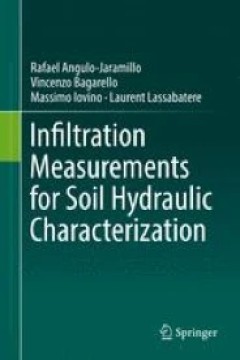
Infiltration Measurements for Soil Hydraulic Characterization
This book summarises the main results of many contributions from researchers worldwide who have used the water infiltration process to characterize soil in the field. Determining soil hydrodynamic properties is essential to interpret and simulate the hydrological processes of economic and environmental interest. This book can be used as a guide to soil hydraulic characterization and in additi…
- Edition
- -
- ISBN/ISSN
- 978-981-10-0007-2
- Collation
- XI, 386
- Series Title
- -
- Call Number
- 630 ANQ i
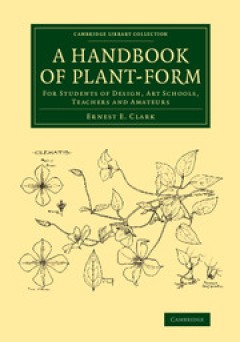
A Handbook of Plant-Form For Students of Design, Art Schools, Teachers and A…
Written and richly illustrated by the Derby-born artist Ernest Ellis Clark (1869–1932), this guide was originally published in 1904 to demonstrate the decorative possibilities of certain plants, mainly English wild flowers, to art students sitting examinations in plant drawing and design. Clark emphasises the importance of retaining a certain amount of botanical accuracy and provides examples…
- Edition
- -
- ISBN/ISSN
- 9781107262225
- Collation
- -
- Series Title
- Cambridge Library Collection - Botany and Horticulture
- Call Number
- -
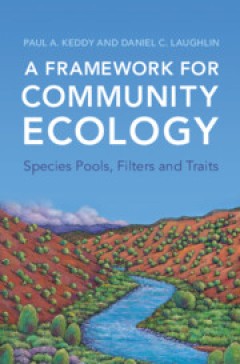
A Framework for Community Ecology
This book addresses an important problem in ecology: how are communities assembled from species pools? This pressing question underlies a broad array of practical problems in ecology and environmental science, including restoration of damaged landscapes, management of protected areas, and protection of threatened species. This book presents a simple logical structure for ecological assembly and…
- Edition
- -
- ISBN/ISSN
- 9781009067881
- Collation
- -
- Series Title
- -
- Call Number
- -
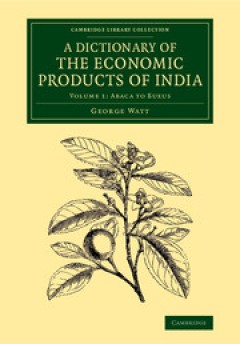
A Dictionary of the Economic Products of India
A Scottish doctor and botanist, George Watt (1851–1930) had studied the flora of India for more than a decade before he took on the task of compiling this monumental work. Assisted by numerous contributors, he set about organising vast amounts of information on India's commercial plants and produce, including scientific and vernacular names, properties, domestic and medical uses, trade statis…
- Edition
- -
- ISBN/ISSN
- 9781107239210
- Collation
- -
- Series Title
- Cambridge Library Collection - Botany and Horticulture
- Call Number
- -
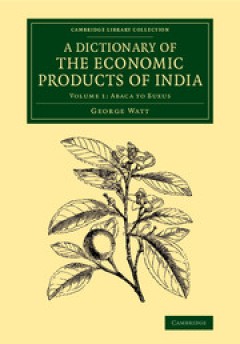
A Dictionary of the Economic Products of India
A Scottish doctor and botanist, George Watt (1851–1930) had studied the flora of India for more than a decade before he took on the task of compiling this monumental work. Assisted by numerous contributors, he set about organising vast amounts of information on India's commercial plants and produce, including scientific and vernacular names, properties, domestic and medical uses, trade statis…
- Edition
- -
- ISBN/ISSN
- 9781107239173
- Collation
- -
- Series Title
- Cambridge Library Collection - Botany and Horticulture
- Call Number
- -
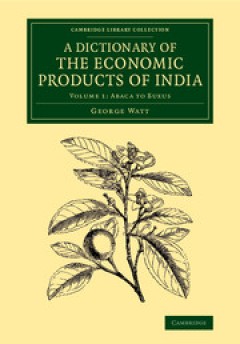
A Dictionary of the Economic Products of India
A Scottish doctor and botanist, George Watt (1851–1930) had studied the flora of India for more than a decade before he took on the task of compiling this monumental work. Assisted by numerous contributors, he set about organising vast amounts of information on India's commercial plants and produce, including scientific and vernacular names, properties, domestic and medical uses, trade statis…
- Edition
- -
- ISBN/ISSN
- 9781107239142
- Collation
- -
- Series Title
- Cambridge Library Collection - Botany and Horticulture
- Call Number
- -
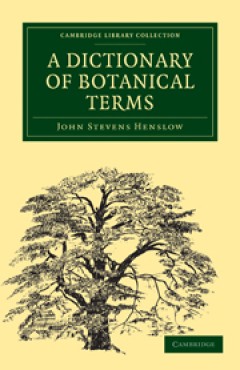
A Dictionary of Botanical Terms
John Stevens Henslow (1796–1861) was a botanist and geologist. As teacher, mentor and friend to Charles Darwin, it was his introduction that secured for Darwin the post of naturalist on the voyage of the Beagle. While Professor of Botany, Henslow established the Cambridge University Botanic Garden as a resource for teaching and research. Students were encouraged to examine plant specimens car…
- Edition
- -
- ISBN/ISSN
- 9780511701542
- Collation
- -
- Series Title
- Cambridge Library Collection - Botany and Horticulture
- Call Number
- -
 Computer Science, Information & General Works
Computer Science, Information & General Works  Philosophy & Psychology
Philosophy & Psychology  Religion
Religion  Social Sciences
Social Sciences  Language
Language  Pure Science
Pure Science  Applied Sciences
Applied Sciences  Art & Recreation
Art & Recreation  Literature
Literature  History & Geography
History & Geography